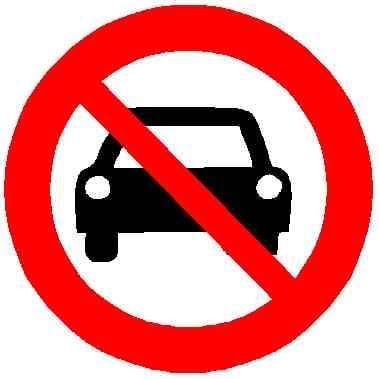They don’t understand probability
Does “dangerous” necessarily default to meaning murder? A breakdown for assault and robbery would be helpful since I suspect that’s the direction a conversation would go.
What’s with the random comparisons? Sometimes it’s the whole US, sometimes specific parts. What does 500 rides mean? Annual deaths per 100’000 population per 500 rides?
The per 100,000 is pretty standard for per capita
Yeah but I don’t understand how it would combine with the 500 rides. Were they counting only people who rode 500 times a year? Or is the implication that for this line they didn’t go by 100000 people, but instead by 500 rides? That would make it incomparable. I just don’t get it
Oh I had to go back to see what you were referring to with the 500 rides thing… Maybe that’s the sample size for NYC?
Although saying per capita here would be misleading, because it’s not like those people ride the subway 500 times AND drives a car everywhere. The ones who take the subway are the only ones at risk of subway homocide, the ones who drive are actually less likely to die in a traffic accident than people outside of their car like pedestrians and bikers, and the two groups probably are much different in size.
Yes 500 is about the average number of rides that an NYC subway commuter takes per year. Since all the other stats are also per year.
500 rides a year per rider
So they only counted those who did 500 rides a year? Or they counted 50’000’000 rides as a proxy for 100’000 subway users?
Is there a graph that breaks it down by rider? As in, deaths per 100K riders on public transit? I think this graph would be including people that don’t ride public transit at all (I fully believe it’s still safer, just not sure if this particular graph is the most accurate).
One way I’ve seen it normalized for cars vs flying is by hours of transit time. That way, it demonstrates you’re in more or less danger per hour in the vehicle during transit.
No data but this is common concern among my social circle too (Toronto). More with people who don’t use transit but also with those who use it to a lesser extent. The economic conditions produced a drastic increase in homelessness over the last decade. It spills over into the public transit system as people seek warmth during the deadly winter cold. While people tend to ignore the problem, as the unhoused population grows, random attacks become a thing. That goes on the news, people see it on their daily commutes, and here we are. It’s not a transit problem.
You hit the nail on the head. The ultimate cause is homelessness due to profit being necessary to live in a home – when shelter is a basic right at all.
It isn’t just that; most of the developed world refuses to build the kind of housing that poor people need to put a roof over their heads. Studios and dorms used to be far more common units of housing.
Having lived in a studio, I think it’s not exactly a solution - it does solve the housing crisis to an extent, but not to the extent of comfort. Adequate housing can and should be affordable. Here the left-wing parties have been pretty active in building more of those, eg by building apartments, modal construction, and the like.
They also have worked on reducing energy bills. Something the right wing parties haven’t.
If we’re at a point where millions are sleeping on streets, I’d rather prioritize housing over housing with space.
If the housing is easily expandable, eg modular, sure.
I do think part of the issue is that you might not see actual violence on a train, but you might see some behaviour which makes you feel uncomfortable. Because you’re in a carriage with maybe 100 other people, then the likelihood is less that you’re in any actual danger, and far more that you’ve witnessed an incident which makes you wary. Meanwhile, there are several car accidents daily, but it’s witnessed by maybe 20 odd people, and most people only see a slowdown of the road.
In TO there’s definitely violence that’s been seen on trains and street cars, but it’s rare. As you said, uncomfortable situations are the common case.
You’re 100% right about the exposure to such inicdents vs car accidents. And that’s amplified by how it’s covered. One’s still rare, the other has been commonplace for decades in the news. So yeah. The material conditions produce these results without much intervention.
There was a parent who didn’t correctly park her pram on a train platform, and sadly the pram went onto the train line, and one of the children and her husband died. This was a major news story, harrowing CCTV footage, a community in mourning. There was discussion on changing platforms to be safer, etc.
Similar story with an SUV which reversed over a pram. No CCTV, the story was barely reported, largely local news. Similar scale of tragedy, and sadly the SUV story is probably more common, but the fact that it’s common also makes it an invisible story.
100%. “Accidents” with cars are so common and normalized, they’re not major news even if many more people get killed or maimed in aggregate.
Kathy Hochul sent in the national guard to swarm the subways, in response to some supposed crime wave. She was eventually forced to admit the data showed she was lying, and violent crime was way down.
IMO statistics should always be a requisite factor in any deliberation or executive order that would mobilize law enforcement or military, and lying about those statics in that capacity should be a serious crime.
What’s with the Sawyer County call out? Do they just have the highest death rate for traffic accidents or something?
I don’t really know anyone afraid of transit crime here in LA, but the main deterrent is mostly how long it takes to get to places – which is ironic, given cars are the main reason our trains and busses are delayed (our trains cross busy intersections, which is insane).
A lot of people aren’t used to being in crowded public spaces like they were used to, with COVID making it worse. The presence of homeless makes the perception worse.
Statistics do not help, when you have a feeling. The honest solution is to make the experience feel safer. So clean open friendly light stations help a lot and the trains should also be clean and friendly.
Statistics DO help, when you have a feeling, if you have an open mind. In fact, knowledge helps modify behaviour a LOT. I get a lot more out of a video essay from https://nutritionfacts.org/ that actually explains the mechanisms behind nutritional advice vs. just hearing, “You should eat more beans.” Data changes my mind, almost every time.
Exactly. Dirty noisy smelly subways are not where people want to be. I’ll take a car any day over that. Sorry.
Tbf, ive only been on the Chicago and Boston subways. They were pretty freaky at night.
Streets are also dirty, noisy and smelly. How have you not noticed this? Just admit that you are familiar with one and not the other. You’ve tuned out the risks that you accept and that you force others to accept unwillingly, and they don’t factor into your perceptions anymore. So of course one looks better than the other, through the lens of delusion.
You’re right, but in a car youre isolated from that, see the difference ?
A car driving through a crappy neighborhood os better than getting on a subway in a carappy neighborhood. Now, this isnt even a question of are cars good or bad but more of if the streets were cleaned up decently and we had well taken care of public transit.
Inner city I agree cars are a nightmare. Sub 100k people towns and rural areas, they are necessary.
They’re also necessary if you haul a lot of stuff for work/hobbies, as I do.
Do you think I’ve never driven a car? Many people take transit for the exact reasons you drive a car. Because it avoids stress and unpleasant situations. Driving sucks!!
Makes sense in cities, driving doesn’t suck, is traffic that sucks. I love driving, although not on boring long interstates or traffic jams obviously.
Yep, absolutely. My hubby has zero issue with public transportation. He’s also 6’1 220 pounds. I don’t think he quite gets why a woman a foot shorter and a hundred pounds lighter would prefer to not.
Kind of a strange thing to say on a post providing evidence that it’s an order of magnitude safer than driving.
It is however a decent anecdotal example of why feels often trump reals when it comes to encouraging transit usage.
Yeah im one of those. It’d be insanely easy to rob and stab someone on a train or bus, im surprised it doesn’t happen all the time. But I also detest large cities.
This is more a crime/homeless issue than a car issue imo. A homeless person with nothing to lose is going to stab you for your wallet. If im driving downtown instead of walking, that cant happen.
It’s insanely easy to stab or rob anyone in public.
Ok, so you actually proved my point, thanks.
A lot harder for that to happen when youre in a car.
I love upsetting lemmites when talking about these things because they likely live in 2 million person cities and have no clue how life is outside of them.
Cars suck in big cities. They’re necessary anywhere that isn’t LA or NY.
No, you just get killed in a car accident thirty or forty times for every one time you avoid “a homeless person with nothing to lose”. How can you possibly advocate. It’s downright irresponsible to talk like that.








